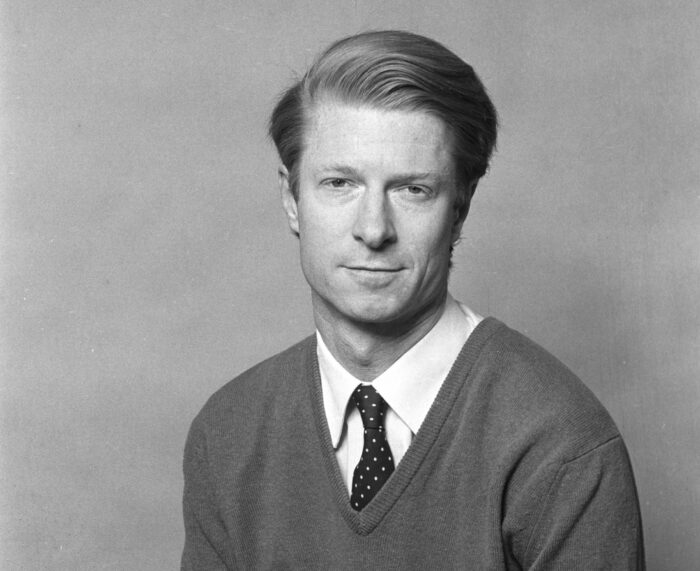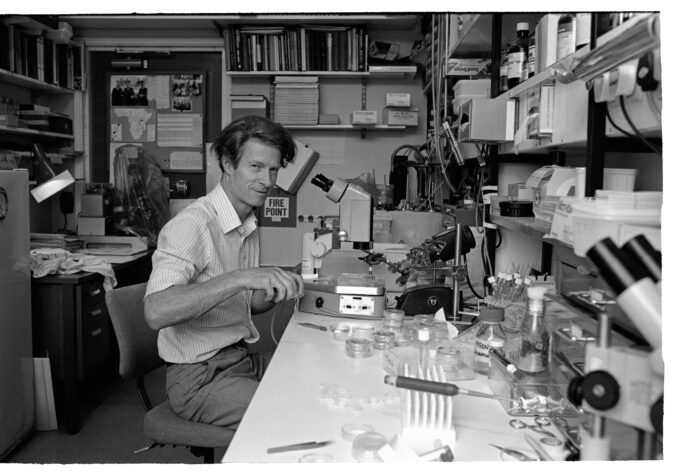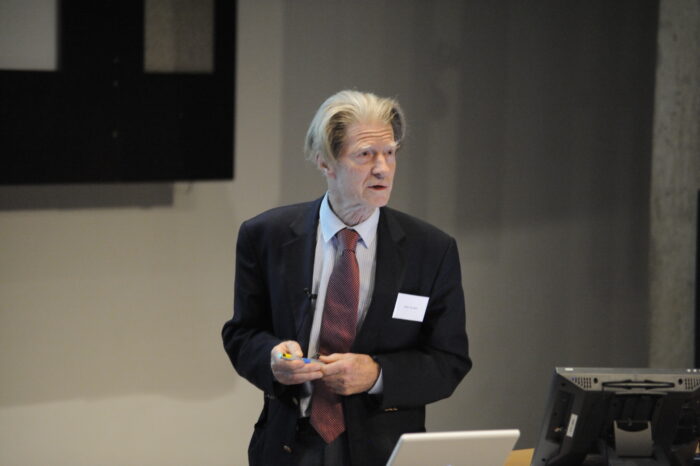
John Gurdon, former Group Leader and Head of the LMB’s Cell Biology Division died on Tuesday 7th October 2025, aged 92. An internationally renowned developmental biologist, John dedicated his life to better understanding how genes can be regulated to produce an entire living organism from a single cell. His pioneering work on nuclear transfer in frogs was the first to demonstrate that egg cells can reprogramme differentiated cell nuclei to revert them to a pluripotent, embryonic state. This birthed the field of stem cell biology and paved the way for the later development of key cornerstones of modern-day life such as IVF. His work on pluripotency was recognised with the 2012 Nobel Prize in Physiology or Medicine, shared with Shinya Yamanaka.
Born in Hampshire, John initially pursued Classics at Eton College boarding school, having been warned in a school report that his notions of becoming a scientist were “a waste of time” after coming bottom of his class of 250. However, he ultimately successfully applied to join the Department of Zoology at the University of Oxford, where he received his degree in 1956. He remained in the lab for graduate studies with embryologist Michail Fischberg, and it was here he conducted his key experiments on nuclear transplantations in frog oocytes. His discovery that differentiated cells could be reprogrammed to a pluripotent state overturned the prevailing thought that cell differentiation was an irreversible process.
John continued to develop applications for this newly discovered pluripotency, and, in 1968, he became the first person to clone an animal. Working on Xenopus laevis, a South African clawed frog commonly found in laboratories at the time owing to their widespread use in pregnancy testing, John used UV to destroy the nucleus of an unfertilised egg and replaced it with the cell nucleus from the intestine of another frog. The egg developed into a genetic twin of the donor frog.

In 1972, John moved from Oxford to join the LMB, expanding his group into the larger lab space available in the Cell Biology Division, of which he later became Head in 1979. Here, he continued to develop the use of Xenopus oocytes as a living test tube, demonstrating synthesis of haemoglobin from injected mRNA, and of 5S rRNA from injected DNA, as well as continuing his studies of gene activation in injected somatic cell nuclei.
He developed a close friendship with LMB Chairman Max Perutz who had recruited him to the LMB, bonding over their shared enthusiasm for Alpine sports. During particularly cold winter months, John was known to take Max ice skating in the Fens, where they were also joined on occasion by César Milstein. A keen skier, John enjoyed ski mountaineering holidays in Switzerland and received a Gold standard ski medal from the British Ski Club.
By chance, John was on hand to represent the LMB and discuss his work with Princess Margaret when he found himself the only senior staff member present during a spare hour in her schedule opening the new Clinical School next door. Those present recalled that she was not overly taken with the Xenopus.
John left the LMB in 1983, relocating his group to the Zoology Department at the University of Cambridge where he became Professor of Cell Biology. In 1991, together with long-time collaborator Ron Laskey, John founded the Wellcome/CRC Institute, which they modelled administratively on the LMB. In 2004, the Institute was renamed the Gurdon Institute in his honour.

John was elected a Fellow of the Royal Society in 1971, and later awarded the Royal Medal in 1985 and the Copley Medal in 2003. He was knighted in 1995 and received the 2012 Nobel Prize in Physiology or Medicine alongside Shinya Yamanaka who, 40 years after John’s initial work on pluripotency, discovered how to utilise four ‘reprogramming factors’ to revert mature, specialised adult cells to a pluripotent state. He served as Master of Magdalene College from 1995 until 2002.
Despite his success, John stalwartly referred to himself as a “total non-intellectual” and kept a copy of his school report disparaging his scientific aptitude on hand in the lab, to serve as a reminder that when his experiments failed that maybe his teacher “had a point.”